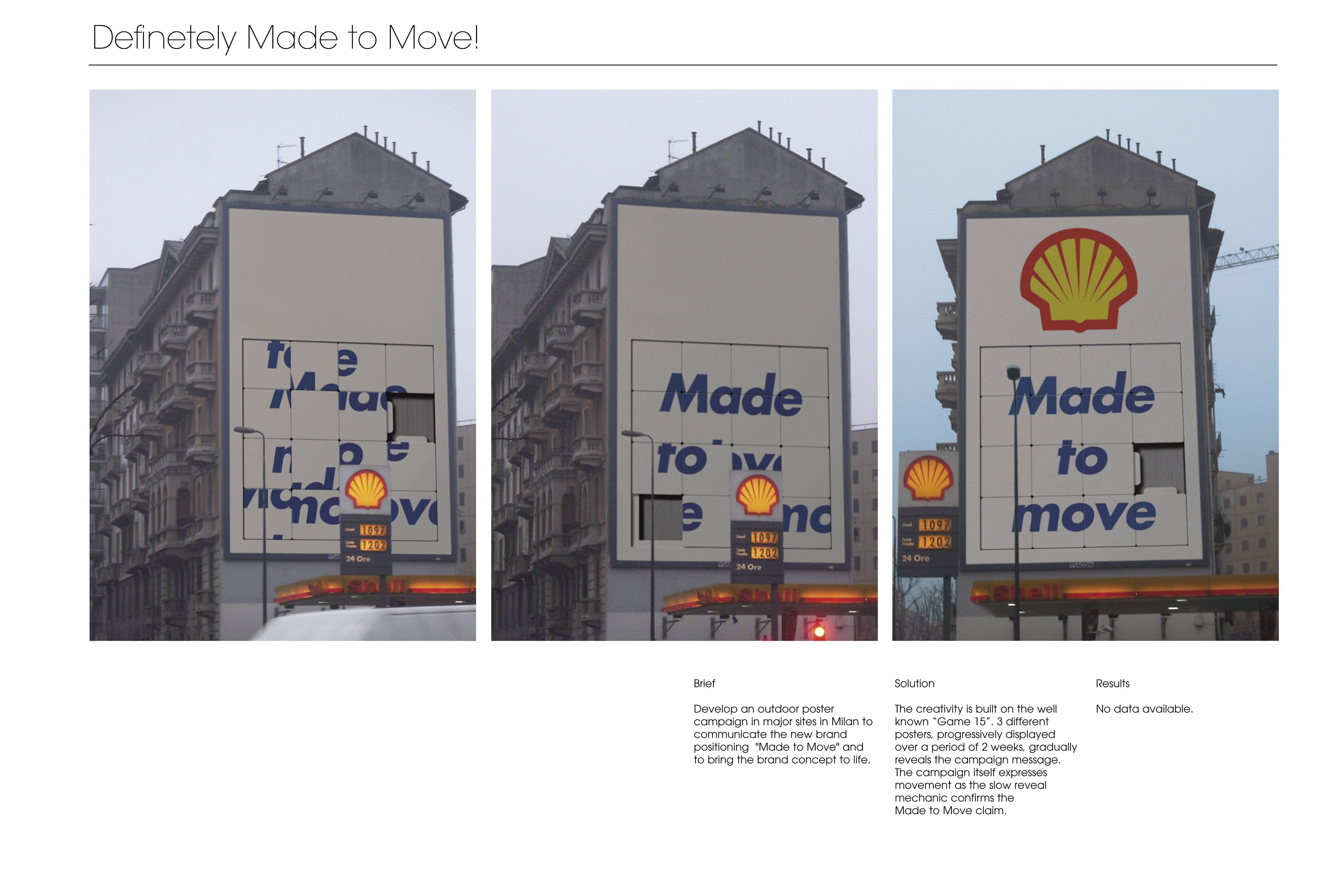Cannes Lions
The New York Times & Shell, Moving Forward: a vision of the future of energy
MEDIACOM, New York / SHELL / 2019


Overview
Entries
Credits
Overview
Background
The 2016 Paris Agreement - the UN framework on climate change – sent a signal around the world that climate change is a serious issue.
In 2017 the U.S. announced that they would cease participation, further fueling a divided and confused issue in the country.
Opinions differ widely about ways to address climate change – nearly half of U.S. adults say climate change is due to human activity, with a similar share saying that either climate change stems from natural causes, or that there is no evidence of climate change at all (source: Pew Research Center).
Against this backdrop, our challenge was to generate engagement with an issue which was being met with skepticism. Using Shell’s Sky Scenario – an illustration of the pathway towards achieving the goals of the Paris Agreement - we introduced a positive and tangible vision of what a future energy system could look like.
Idea
Opinions differ widely on the need to address climate change – nearly half of U.S. adults say climate change is due to human activity, with a similar share saying that it stems from natural causes, or that there is no evidence of climate change at all. (source: Pew Research Center).
Decades of work on ‘time discounting’ point out that we overvalue benefits in the short term relative to benefits in the long term. In much the same way that people don’t save enough for retirement, preferring to spend now, or overeat, despite knowing the problems it can cause in the future, acting on climate change represents a challenging trade-off between short-term actions and long-term benefits (source: Harvard Business Review, Behavioral Economics.com, ARC).
This meant we needed to ‘remove time’, and bring what seemed far into the future, into the present.
Our Idea: provide a vision of the future of energy.
Strategy
Shell’s audience of energy-engaged millennials – globally-minded, outward looking and well informed - live in an Uberized world, in which 24/7 mobility is as normal as running water. However, more than a third of the CO2 released in the United States comes from transportation sources, the vision of the future for this audience focused squarely on transport.
Collaborating with NYT, we had to create an experience that was disruptive, contextual, and provided actionable inspiration for people to engage with this vision of the future.
Our strategy involved two levers:
1.To earn our audience’s attention, the experience had to be in new and unexpected locations for the brand, disrupting the norm. We had to create media where it didn’t previously exist.
2.We had to dispel ‘time discounting’, working with NYT to create innovative, tangible comms experiences which brought a positive vision of the future of energy into the present day.
Execution
The Moving Forward programme introduced our audience to the future possibilities of US transport through an engaging multi-channel experience of augmented reality, out-of-home experiential and CGI animated film.
The augmented out-of-home experience combined computer vision tracking and real-time data to create a dynamic vision of the future. Road vehicles, aircraft, and ships were tracked in real-time allowing for dynamic serving of content on large scale custom- built screens that were created for the architecture in each location. Instead of merely overlaying pre-recorded renders, our future elements interacted with the real world in real time, giving information about transportation methods as they appeared in shot. Custom software took API feeds to apply information such as the position of the sun and weather conditions to match the lighting and integrate the future world into the real one perfectly.
We created media where it didn’t previously exist, disrupting peoples journey and heightening impact to our experience. Empire Stores in Brooklyn New York and IAH airport, Texas were selected for their transport ‘views’ and a combined interested audience of over 1 million people in just over a month.
Viewers were encouraged to initiate the online AR experience on site, bringing all channels of the program together in the same place, at the same time - turning phones into ‘Windows to the Future’.
3D animations in both digital and print - were geo-located serving content relevant to their current location so people in New York would be served different content than those in San Francisco, meaning the content could be more relevant than ever before.
Audio podcasts, multi-page print spreads, animated short films, and the first augmented reality within a paid post on the New York Times brought clarity to the carbon footprint peoples goods leave behind, and how they could positively impact climate change.
Outcome
Our audience engaged with our tangible vision of the future. 91 million impressions in just 20 weeks. 1 million interactions with our first-of-its-kind AR paid post in the New York Times, and the time spent with our mobile activity exceeded benchmarks by 38%.
By bringing a vision of the future of energy into the life of our audience today:
• 78% believe that Shell is a leader in transportation innovation
• 81% perceive Shell as a modern energy company
• 85% agree that Shell is helping to create energy solutions for the future.
70% of people that interacted with the augmented out-of-home experience recognised that their actions today can positively affect future global energy challenges. (Source: MediaCom proprietary consumer research)
Our collaboration with NYT influenced not only the way our audience viewed Shell, but how they viewed themselves, acknowledging the impact of their actions today on the world of tomorrow.
Similar Campaigns
12 items







